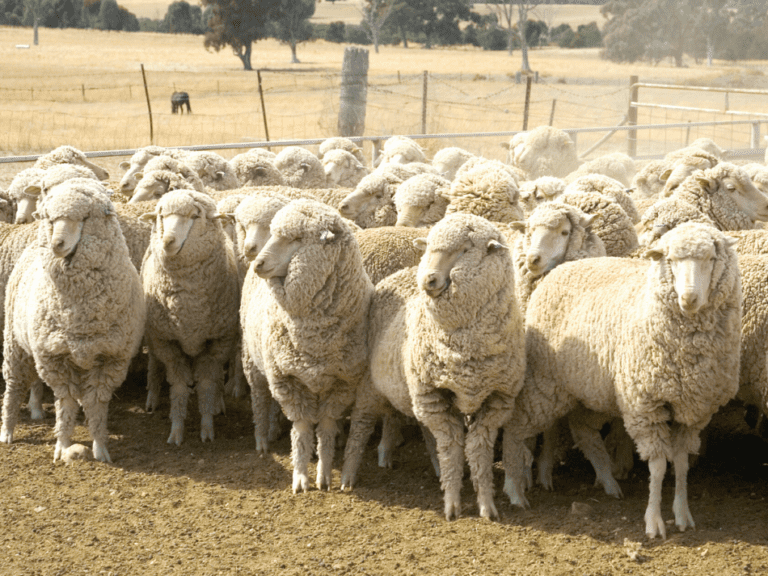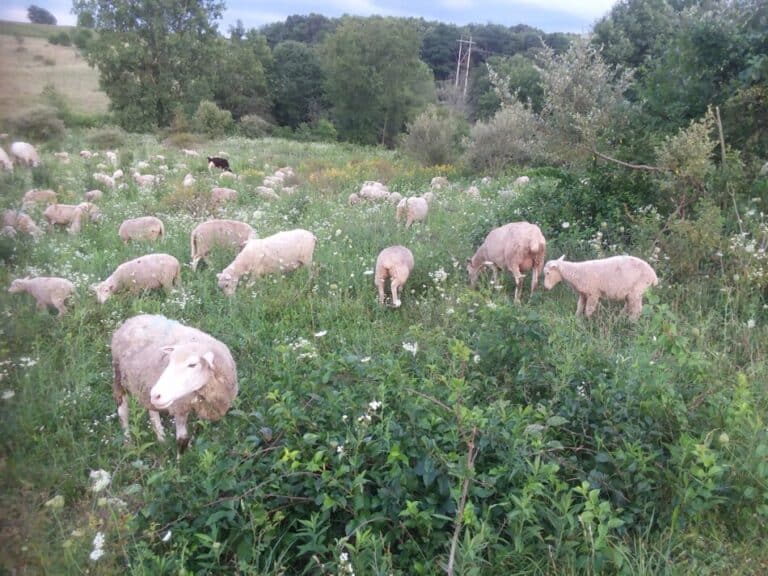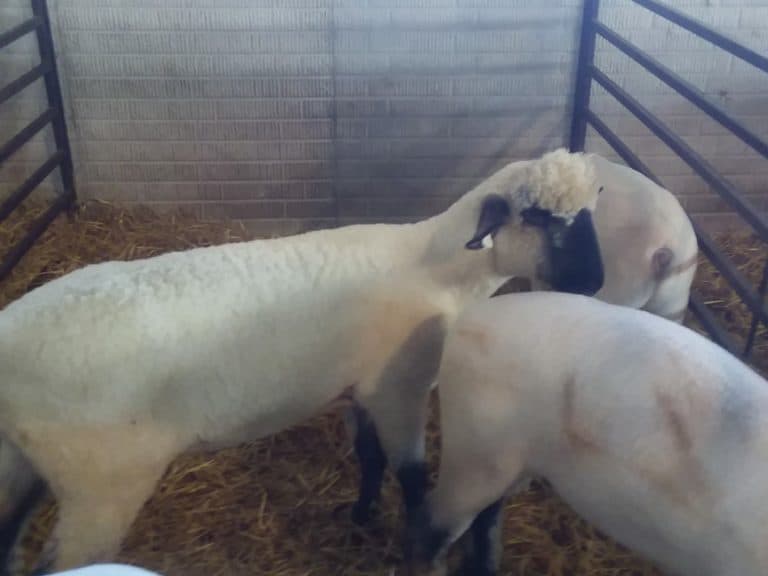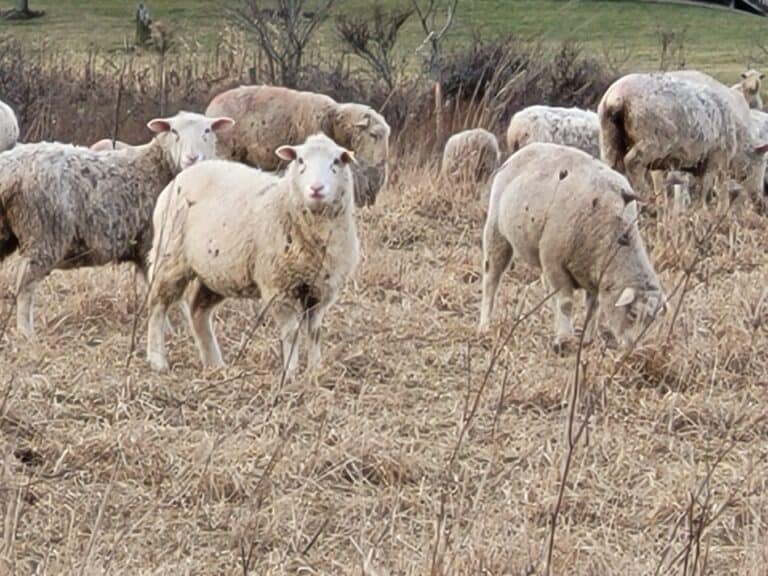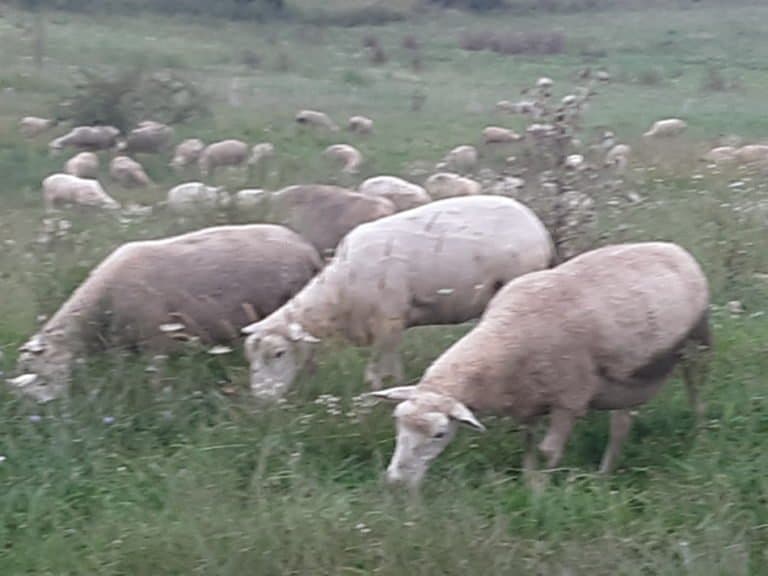When Is A Ewe Too Old To Breed?
It’s common to think about when your sheep are old enough to breed and start producing for you but what about the other end of their productive life, when sheep are getting older?
How long can a ewe remain productive and what are the things you need to check to see if she is ageing well? When is she too old to breed?
Sheep can remain productive for up to 10 years, as long as she can keep up with the demands of raising lambs and her teeth, udder, hooves and body condition all allow her to keep up with her peers. Most sheep will decline in productivity after 5 to 6 years of age, depending upon her genetics and flock management.
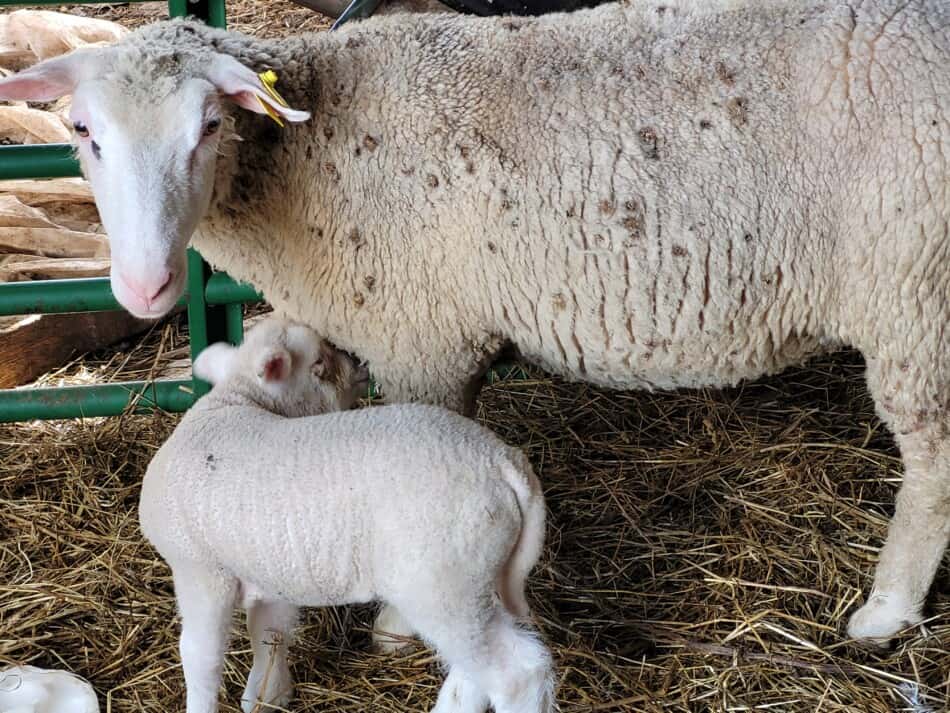
Raising Sheep For Profit will show you some example budgets for your flock.
When is a ewe too old to breed?
A ewe is too old to breed when she is no longer keeping up with the younger ewes in terms of body condition or ability to raise lambs. This can happen as early as 5 or 6 years old and is likely by 10-12.
This age will vary with individuals in the flock, how the ewe was managed up to this point in her life and her genetics.
When a ewe is getting too old to breed, you will normally see things like:
- she can’t keep on weight
- she falls behind the rest of the group
- she does not raise a lamb
If you know anything about sheep, you also know that any of these things could happen to a younger ewe and have a variety of potential causes. This is where you have to consider your management.
Ideally, you have managed the flock so that the other reasons for something like poor body condition (parasites are a likely culprit here), would have been handled with the rest of the flock.
That means that any problem you are seeing now in a ewe is an individual problem that this ewe still has despite the problem being managed in the rest of the flock.
This makes her a likely candidate for culling (selling due to lack of productivity) since the fix you tried earlier did not work for her but the rest of the ewes are fine.
| Things to check | Ewe is probably fine | Ewe is possibly too old |
| Daily activity | Keeps up with the group | Lags behind |
| Body condition | Keeps good condition in maintenance part of breeding cycle | Thin or underconditioned in maintenance part of breeding cycle |
| Teeth | Has all teeth teeth are visible above gum line | Missing teeth little to no griding surface above gum line |
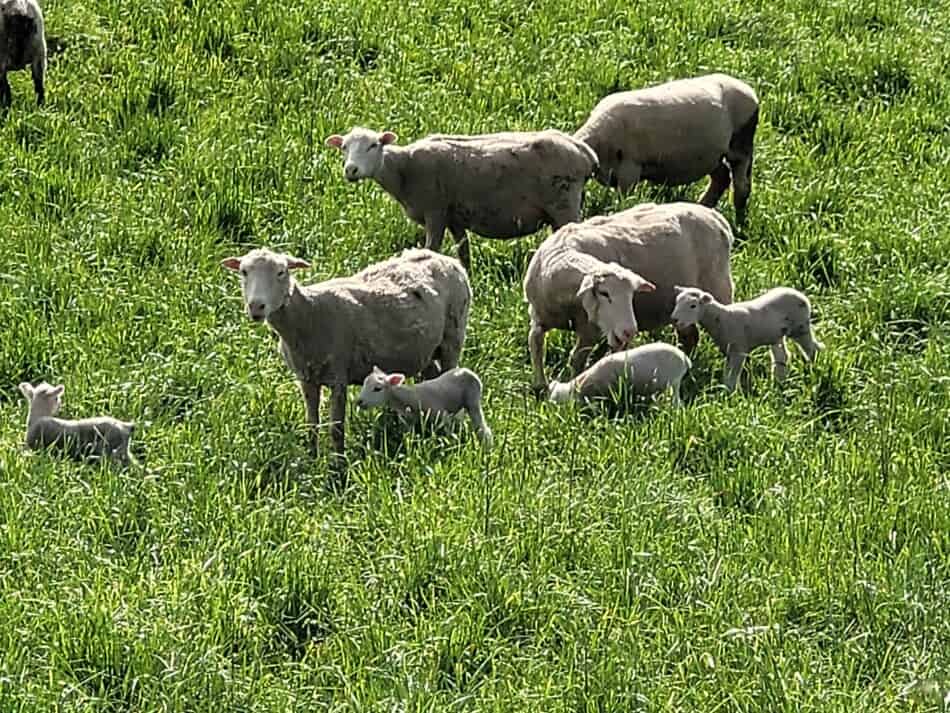
Specific things you are looking for on an older ewe
There are some specific things you should be looking for on a ewe to determine if she should be kept for another year in your flock. You want to get a look at each ewe’s teeth and body condition.
Of course, you’ll need to grab the sheep to determine that her teeth are holding up and while you have her, you’ll want to check her udder and feet, as well.
Is she keeping up with everyone else?
First, did she successfully raise at least one lamb this year and do so to your standards? If she didn’t raise a lamb, why do you still have her? Don’t keep freeloaders, regardless of age.
As far as older ewes in the flock, the best way to see if a ewe is too old to breed or not is to watch her in the flock and see how she is performing compared to the rest of the group.
If you watch the flock do their normal daily activities and can not tell which ones are the older ones, that means the older sheep are keeping up and functioning well in the group.
If she does the work of everyone else (raises lambs and gets her own food) and keeps herself in good shape, like everyone else, she is keeping up with her peers.
This is the first test of whether or not she can stay and if she looks like everyone else, she’s doing good, so far.
Look at body condition during maintenance
Body condition is the one thing that you can look at on a ewe that shows you how she is doing overall.
If she is able to keep up with the rest of the flock and maintain a good body condition in the maintenance part of the breeding cycle, chances are that she is holding up well for her age.
You want to check her body condition during a maintenance part of the breeding cycle, rather than a working part of the cycle.
Why? The maintenance part of the breeding cycle is when that ewe has the least demands on her system.
If she is having trouble maintaining her body condition when she only has her own maintenance needs to cover, how can she possibly have enough reserves left over to care for a lamb?
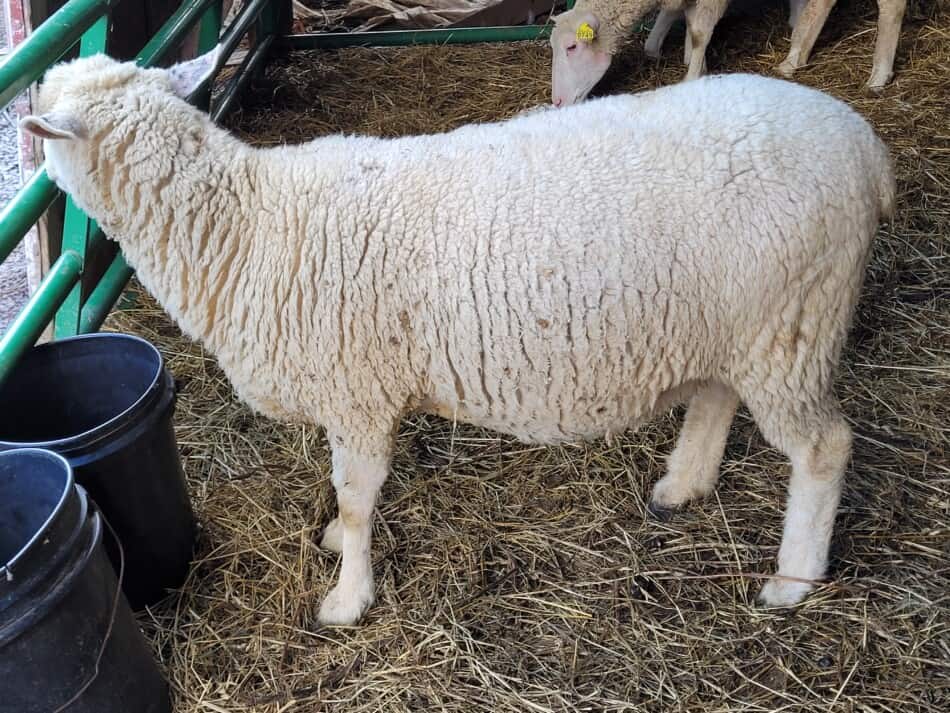
Determining body condition of a ewe
Sheep that have good body condition will have a rounded out body and will look full.
Any ewe that does not look as filled out, body wise, as the rest of your flock is in need of a closer examination. You’ll need to grab her and feel her backbone to determine body condition.
You can check body condition by feeling over the backbone of your ewe while she is standing. You should be able to feel some backbone but not have it be prominent.
If you can’t feel any backbone, she’s too fat, which has a different set of complications and is generally not likely in ewes, unless you are giving them concentrates, like grains or pellets.
More likely, the body condition problem will be lack of condition, meaning she is too thin. In this case her spine will be very easy to feel, since she is not keeping on weight.
As you get more experience with your flock, you’ll be able to tell an underweight or overweight sheep by looking, even if she has her winter coat, until then, feel the backbone.
Check the teeth
Look at the teeth of the ewe by holding her head and raising her lip to look at her teeth. You want to see that the teeth are all there and that there is still plenty of tooth above the gum line.
As much as we want to help our flock, teeth are one of the things that we can not fix. Once they are worn down,
Teeth wear down as the sheep ages
Sheep only get one set of teeth as an adult (their baby teeth fall out and are replaced starting at about 1 year of age) and those adult teeth have to last a lifetime.
As the sheep gets older, she will eventually wear away her teeth, which leaves her with no ability to keep up with her calorie needs, so she will start to loose weight and fall behind the rest of the flock.
Other things to check while you are looking at the ewe
While you have the ewe, you might as well double check her udder and her feet to be sure she can stay productive the following year, even though neither of these problems are specifically age related.
Double check the udder
Check the udder to make sure she has two working sides. Look to see that both teats look the same and both sides of the udder are about the same size.
If you see a lopsided udder, with one side up and the other side down, chances are she has a bad side (the side that is up) and will only be able to nurse one lamb.
The other consideration here is what made her lose functionality in that side of the udder? If the problem is mastitis then she is more prone to mastitis than the rest of your flock and should be culled.
You don’t want to continue using those genetics in your flock and you definitely don’t keep ewe lambs from her.
How are her feet?
The final thing you want to specifically look at is her feet, after all, without good mobility how can she get to the grass and take care of her lambs?
Generally, foot problems are easy to see, you can watch a ewe with bad feet limping along or walking oddly due to overgrown hoof walls or an injury.
The catch here is that once you get the sheep in the barn to your working area (the area where you catch them individually) she will “hide” her problems since she is under more stress than normal.
You can either have a list of ewes that you need to check feet on or just check everyone as you get ahold of them for the other checks like udder and teeth.
Trim away excess hoof wall
You can trim away excess hoof wall to straighten out the bottom of her hooves to help her walk normally.
While you are there, look to see if a quick trim is all she needs or if there is an infection or a structural problem that puts her on the cull list.
Other articles of mine you may be interested in reading:
7 Reasons Why Lambs Are Rejected Or Orphaned
Why Do Sheep Have Paint On Them?
Another site to consider:
Sheep 101 also has some of the basic stats on sheep including ewe productivity at Sheep 101: Basic Information About Sheep
